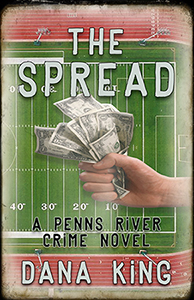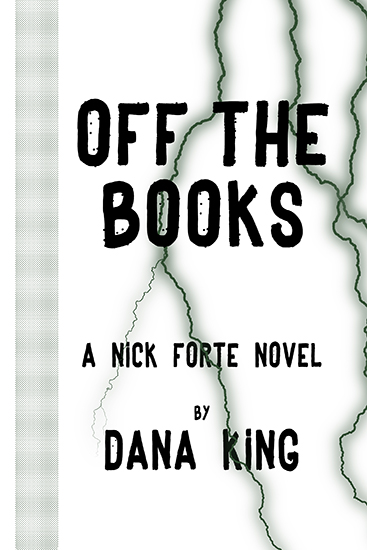Jack Davis is a
retired Special Agent of the United States Secret Service, spending nine of his
twenty-seven years working as a field agent, including three in the New York
Field Office.
He did back to back
permanent protective details (Former President Reagan and President Clinton)
from 1993-1999, including two years on the Counter Assault Team (CAT).
After being
assigned to Secret Service headquarters in late 1999, he was promoted and took
over the agency’s multi-national Electronic Crimes Special Agent Program. He served as the Secret Service
representative to the G8 High-Tech Crimes Sub-Group and the APEC Cybercrime
Subcommittee.
After 9/11, he was
detailed to the newly formed Department of Homeland Security and helped stand
up the National Cyber Security Division. In that capacity he assisted in
briefings to congress and the White House.
In 2005 he came
back to the Secret Service proper as an Assistant to the Special Agent in
Charge for the Vice President’s Detail.
In 2006 he was
selected to supervise the Counter Assault program.
Finally, in 2008,
he was again assigned to headquarters and served as the Chief Information
Security Officer.
He retired in 2011.
A Sense of Justice is his first novel.
One Bite at a Time: Jack, welcome to the blog. We have
shared origins, both self-publishing our first books, but I’ll get to that
later. Let’s start by you telling everyone a little about A Sense of Justice.
Jack Davis: Dana, thanks for having me.
A Sense of Justice is a combination police procedural/thriller…I
hope. It revolves around three main
characters.
PJ Morley, a Secret Service agent out of the New York Field Office
who is in charge of the NY Electronic Crimes Task Force. The agents in his
squad are responsible for tracking down criminals – domestic and foreign –
through the anonymizing entrails of the internet.
Alvaro Lopez is a mid-level Latin Kings Gang leader from Mexico
City. He is desperately trying to find a way out of gang life to protect his
wife and young family.
The third major character is a sadistic serial killer who has been
using the internet to ply his grisly trade for over a decade. He is methodical
and has developed a nearly flawless system to execute his macabre vocation.
The three stories intersect when Morley is contacted by a former
lover and requested to unofficially “look into” the hacking of a pharmaceutical
company. The case that could have significant negative consequences for a
high-ranking congressperson if news of his association with the company were to
get into the press.
So, with an emphasis on speed, and working outside the normal law
enforcement and Secret Service channels, Morley and the NY ECTF set off in pursuit
of a world class computer criminal, never realizing the true monster that
awaits them on the other end of the line.
OBAAT: You’re a retired federal law enforcement agent. How much of your
experience went inti the book?
JD: I spent 27 years as a Secret Service Agent and a tremendous amount
of the book is based on incidents that either happened to me, or other agents that
I worked with.
A portion of the main
plot is based on a case I worked in 1992 out of San Jose, CA. I was
investigating a case involving the use of false ID to pass counterfeit checks;
both primary Secret Service jurisdictions.
The suspects, two
guys and two girls, mid 20s, were traveling up the coast of California passing
the checks at various malls and high-end stores. If memory serves, they started
in Santa Barbara, then went to Monterey or Carmel, then Santa Cruz. That was
where they stopped, and I lost track of them.
I had some good
leads, and I was able to tie the guys to multiple false IDs and tens of
thousands of dollars of fraud in the various cities. The problem was, I didn’t
have real names for any of the group.
Once I’d gotten my
case together, I went across the hall and talked with my local FBI counterpart.
He called me back all excited later that day, he had a match. The primary
suspect, was a hitman out of LA. The Bureau had a warrant out for the guy for attempted
murder and a bunch of other violations.
Here I was looking
at this crew, for false Id and passing counterfeit checks, generally
perpetrated by non-violent criminals, and he was a murderer, and his buddy was wanted
for assault with a deadly weapon. It was a stark reminder to me that no
investigation is routine.
The primary suspect
was arrested by the Bureau for attempted murder et al. my charges were lumped
into the charging document.
He eventually
flipped on the guy in Vegas who had hired him and received I think 10 years in
federal prison.
OBAAT: This being your first book, I’m assuming it was also your first time
working with an editor. What was that experience like? Don’t feel obligated to
give the editor’s name, but by all means do so if you want to show some love.
JD: Yes it was my first experience with editors. Like most authors, I
had multiple people look at the manuscript over the time that I was writing. From
writing group members to beta readers to friends, yourself included, there were
a ton of people who provided assistance. I won’t go into the names for fear of
leaving someone out. They were of tremendous help in making the final product
better.
In terms of a
professional editor, I was fortunate enough to have Chris Rhatigan do my final
edits. He was phenomenally helpful and easy to work with. I’d recommend him
highly.
OBAAT: I was lucky to have Chris as the editor of several of my books for
Down & Out. Was there anything in particular that he suggested, or caught,
that made you sort of smack yourself upside the head and think, “Wow, thanks?”
Or was it more of a general smoothing out of things?
JD: Chris has an eye for detail, and in numerous places showed where I
had, for instance: changed a street name, used to vs too, or spelled a name
differently in various places in the manuscript. In addition, he corrected
tense, punctuation and other grammar errors too many times to count. So, while
I can’t say there were any, “smack my forehead, Wow,” moments, Chris did give
me dozens of, “Ohhhh yeah, I have to change that,” suggestions. Having him in
the process made the book infinitely better.
OBAAT: What did you expect from the self-publishing process? Was it easier
than you thought, harder, or about you expected?
JD: That’s a good question. While I was going through the process, I
would have said it was incredibly painful. Now that I am on the other side, I
can see that much of my pain was self-inflicted.
I used Amazon’s
Kindle Direct Publishing. Like just about anything else, once you get used to
the program it makes sense. All-in-all I am happy with the process and product.
OBAAT: And now for the classic final interview question: What’s next?
JD: That’s easy. Most of America, and the world for that matter, sees
the Secret Service as the guys standing around the president with sunglasses
and talking into our sleeves. So, while my first book discussed the
investigative aspect of the Secret Service mission, my next book, also fiction,
will address protection.
I was fortunate
enough to have been on three permanent protective details (Former President
Reagan, President Clinton and as a supervisor Vice President Cheney) and
hundreds of temporary protective assignments/details, mostly foreign
dignitaries or candidate nominee details. So my next book will draw on those
experiences.





1 comment:
Good interview, Dana. I look forward to reading his book.
Post a Comment